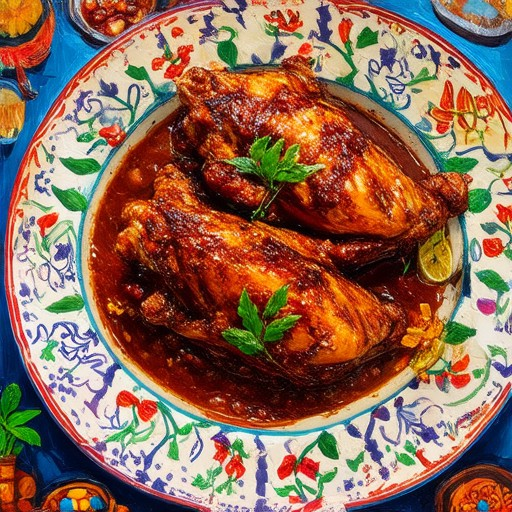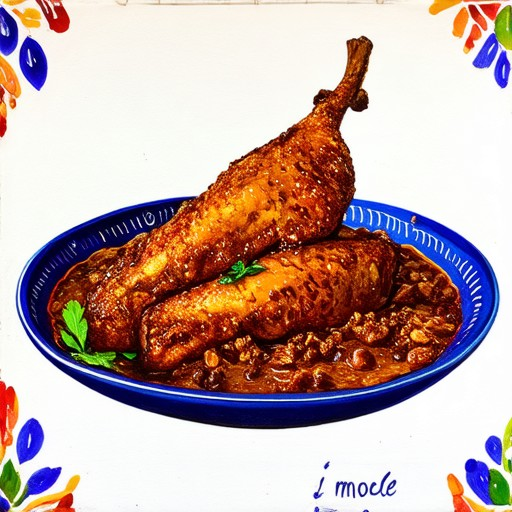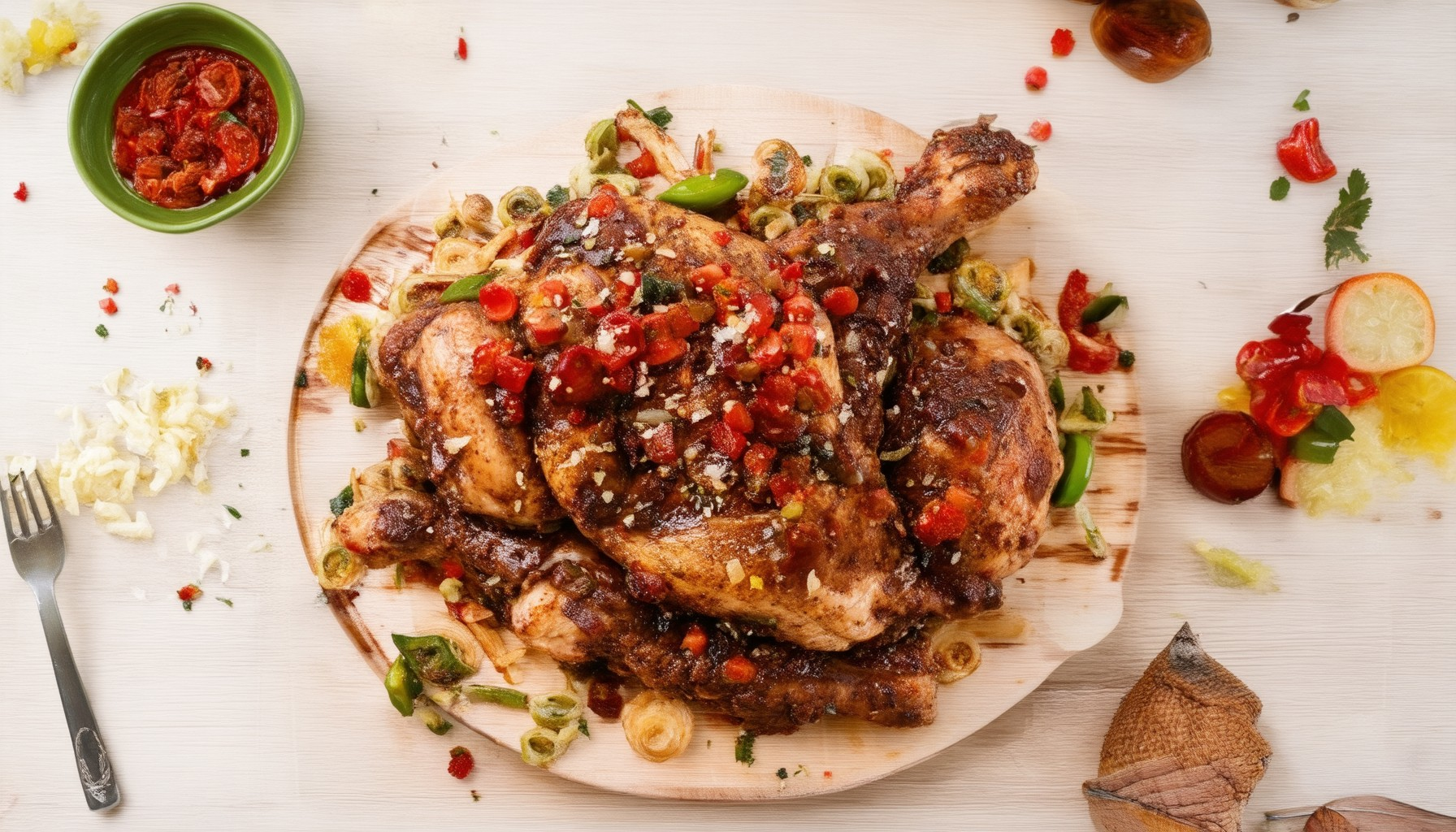Festive occasions bring joy and a sense of celebration, and what better way to enhance your holiday meals than with the rich, complex flavors of authentic festive mole recipes? Originating from the culinary traditions of Mexico, mole sauce has become a staple in countless households, offering a unique taste that pairs perfectly with a variety of dishes. Whether you’re preparing for Christmas, New Year’s, or any other special event, crafting the perfect festive mole can elevate your meal to new heights. This article delves into the art of creating delicious and visually appealing festive mole recipes, exploring everything from traditional ingredients to modern twists that keep these dishes fresh and exciting. From the most popular additions to mole to the health considerations, we’ve got you covered with expert tips and insights to ensure your festive celebrations are unforgettable.
Key Takeaways
– Mole enhances meals with its rich, complex flavors, making it a versatile and festive addition to various dishes.
– While mole is calorie-dense, it can be part of a balanced diet when prepared with healthier ingredients and enjoyed in moderation.
– Mole Poblano, the most popular variety, is a cherished national dish of Mexico, ideal for celebrating occasions like Día de los Muertos.
– Explore the diverse range of mole varieties, each offering unique twists and perfect companionship for a wide array of dishes.

What is the Most Popular Thing to Add to Mole?
Mole sauce is a rich, complex, and flavorful condiment that originated in Mexico and has become a staple in many cuisines worldwide. While the exact ingredients can vary depending on the region and the type of mole, there are a few key components that make mole sauce so popular and versatile.
Key Ingredients in Mole Sauce
Mole sauce typically consists of a base made from dried chili peppers, tomatoes or tomatillos, and a small amount of chocolate. These ingredients work together to create a deep, earthy flavor that pairs well with a variety of dishes.
Common Additions
In addition to the core ingredients, there are several popular things that people often add to mole sauce to enhance its flavor and texture:
- Nuts and Seeds: Adding peanuts, almonds, or sesame seeds can introduce a crunchy texture and nutty flavor that complements the smokiness of the chili peppers.
- Fruits: Some recipes incorporate fruits like pineapple or mango to balance the spiciness with sweetness.
- Herbs and Spices: Cinnamon, cloves, and anise are often added to deepen the flavor profile of the sauce.
- Vegetables: Onions, garlic, and bell peppers are commonly included to add depth and complexity.
- Bread or Tortillas: In some cases, stale bread or tortillas are used to thicken the sauce, giving it a smoother consistency.
Popular Variations
There are several popular types of mole sauce, each with its own unique twist:
- Mole Rojo: A spicier version that uses red chili peppers and is often served with chicken or pork.
- Mole Negro: A sweeter, darker version that incorporates chocolate and is traditionally served with turkey or duck.
- Mole Blanco: A lighter version without the chocolate that is perfect for fish or seafood.
Serving Suggestions
Mole sauce is incredibly versatile and can be used in a variety of ways, including: – As a dipping sauce for pan dulce (Mexican sweet bread) – Topping for grilled meats, poultry, and fish – Mixed into soups and stews – Used as a base for mole-inspired cocktails or desserts
By experimenting with different ingredients and variations, you can create a mole sauce that suits your personal taste and elevate your dishes to new heights.
What is the Most Famous Mole?
Mole Poblano, also known as Mole Rojo, is considered one of the most iconic and widely recognized types of mole in Mexican cuisine. This rich, complex sauce typically features a deep reddish hue and is made with a blend of ingredients such as dried chilies, onions, garlic, cumin, and chocolate. Its versatility makes it a staple in various dishes, from traditional tlayudas to modern reinterpretations.
While Mole Poblano is globally celebrated, other notable varieties include:
- Oaxacan Mole Negro : A darker, richer version incorporating black beans, squash seeds, and chocolate, beloved for its complexity.
- Yucatecan Mole : Known for its lighter profile, often featuring annatto seeds and a balance of spices.
Each region of Mexico has its own take, reflecting local flavors and traditions. At Panito Mole, we specialize in crafting authentic mole recipes that capture the essence of Mexican cuisine, offering both classic and innovative twists.
For more insights into our mole recipes and authentic Mexican flavors, explore our website: Panito Mole .
Popular Mole Varieties
- Mole Poblano: A crowd-pleasing favorite with a rich, earthy taste.
- Mole Negro: A Oaxacan delicacy known for its deep, savory profile.
- Mole Verde: A herby option with fresh herbs and a lighter base.
- Mole Chilpotle: Spicy and smoky, perfect for bold flavor preferences.
By experimenting with these varieties, you can discover which mole best suits your taste preferences. At Panito Mole, we invite you to explore the rich world of authentic Mexican mole sauces and elevate your dining experience.

Traditional Mole Sauce
Mole sauce, a beloved condiment in Mexican cuisine, is made using a blend of ingredients that create a rich, complex flavor profile. The base typically includes:
- Pure chocolate (often bittersweet or unsweetened)
- Chili peppers, usually including guajillo, ancho, and chipotle varieties
- Tomatoes for acidity and depth
- Onions and garlic for aromatic notes
- A mix of herbs such as thyme, oregano, cumin, and epazote
- Broth or stock, often chicken
- Sweeteners like sugar or agave nectar
- Cilantro for freshness
The sauce can vary in texture and heat level depending on the type of mole. Here are a few common variations:
Types of Mole Sauce
- Mole Rojo: A spicier version made with red chili peppers, perfect for meat dishes.
- Mole Verde: A lighter, herby option with green herbs and less heat, ideal for fish or chicken.
- Mole Negro: A dark, sweeter mole made with black beans, chocolate, and spices, often served with pork.
To enhance your mole sauce, consider adding:
- Additional dried fruits like raisins for sweetness
- Nuts or seeds for texture
- Brown sugar or honey for balance
- Avocado slices for creaminess
For the best results, use high-quality ingredients and let the sauce simmer slowly to allow the flavors to meld together. Experiment with different variations to find your personal favorite!
Discover authentic mole recipes and explore the rich flavors of Mexican cuisine on our website: Panito Mole .

What Do Mexicans Eat Moles With?
Mexicans commonly pair mole with a variety of sides that complement its rich, complex flavor. Here are some traditional and popular accompaniments:
- Rice
- Tortillas
- Beans (such as black beans or refried beans)
- Meat (like chicken, pork, or beef)
- Vegetables (onions, peppers, or squash)
- Bread or other carbohydrates
- Desserts like flan or churros
Mole is often served with rice to soak up the sauce, and tortillas are used to scoop and mix the dish. While beans and meats are common additions, the base of mole can also be vegetarian. Regional variations may include different sides depending on the area, but the core components remain consistent.
Is Mexican Mole Unhealthy?
Mole, a beloved dish in Mexican cuisine, is often perceived as rich and indulgent, leading some to wonder if it’s unhealthy. While it may seem high in calories due to its ingredients like chocolate, nuts, seeds, and spices, mole is not inherently unhealthy when consumed in moderation. Here’s a breakdown of its nutritional considerations:
- Calorie-Dense: Mole is calorie-dense, primarily due to the fats from ingredients like avocado, lard, and chocolate. A serving can range from 300 to 600 calories, depending on the recipe and portion size.
- Saturated Fats: The use of animal fats and oils in traditional recipes contributes to the high saturated fat content, which may raise concerns about heart health.
- Sodium Content: Some commercial mole mixes are high in sodium, which can affect blood pressure if consumed in large quantities.
- Carbohydrates and Fiber: Mole contains carbohydrates from ingredients like corn, rice, and sugar, along with fiber from seeds and vegetables, making it a satisfying meal option.
When compared to other sauces or dishes, mole’s nutritional profile varies widely depending on the recipe. Traditional homemade versions may be less heavy than commercial ones, often incorporating healthier ingredients like fresh vegetables and lean proteins.
While mole may be high in calories and fats, its rich flavor and nutrient-rich ingredients make it a flavorful choice for those seeking a hearty, satisfying meal. Moderation and balance are key to enjoying mole without overindulging.
For those concerned about health, pairing mole with smaller portions of protein and accompanied by vegetables or whole grains can help mitigate any potential negative effects.
Looking for a delicious and nutritious way to enjoy mole? Check out our authentic mole recipe for a balanced and flavorful approach!

What is the Most Popular Mole in Mexico?
The most popular mole in Mexico is mole poblano , a rich, complex sauce originating from the state of Puebla. Known for its velvety texture and earthy flavors, mole poblano is widely recognized as the national dish of Mexico and is a staple during celebrations like Día de los Muertos (Day of the Dead).
Varieties of Mole in Mexico
While there are countless variations of mole across Mexico, here are the most prominent ones:
1. Mole Poblano
- Originating from Puebla, mole poblano is the most iconic and widely loved variety. It typically features a base of chocolate, tomatoes, onions, garlic, and a blend of spices like ancho chile, cumin, and cinnamon. The sauce is slow-cooked until it thickens and develops a luxurious texture.
- It is often served with turkey, chicken, or pork and is a central component of festive meals.
2. Mole Negro (Oaxacan Black Mole)
- Hailing from Oaxaca, mole negro is another highly regarded variety. It incorporates dark chocolate, pasilla peppers, and a host of aromatic spices. The deep, rich flavor makes it a favorite among food enthusiasts.
- This mole is often paired with dishes like carnitas (pork belly) or duck.
3. Mole Rojo (Guerrero Red Mole)
- From the state of Guerrero, mole rojo is characterized by its vibrant red color and bold spice profile. It usually contains guajillo chiles, oregano, and thyme, creating a fiery yet balanced sauce.
- It is commonly served with grilled chicken or fish.
4. Mole Yucateco (Yucatecan Mole)
- A simpler version of mole, mole yucateco is found in the Yucatan Peninsula. It typically includes ingredients like bananas, plantains, and achiote seeds, giving it a unique twist.
- This mole is often served with tlayudas (Yucatecan-style pizzas) or as a dipping sauce for pan de yucé.
Why These Moles Are Popular
The popularity of these moles stems from their rich history, regional diversity, and adaptability to various dishes. Each variety reflects the culinary traditions of its birthplace, making them cultural icons in Mexico.
For more information on crafting these moles, check out our comprehensive guide to mole recipes .





0 Comments